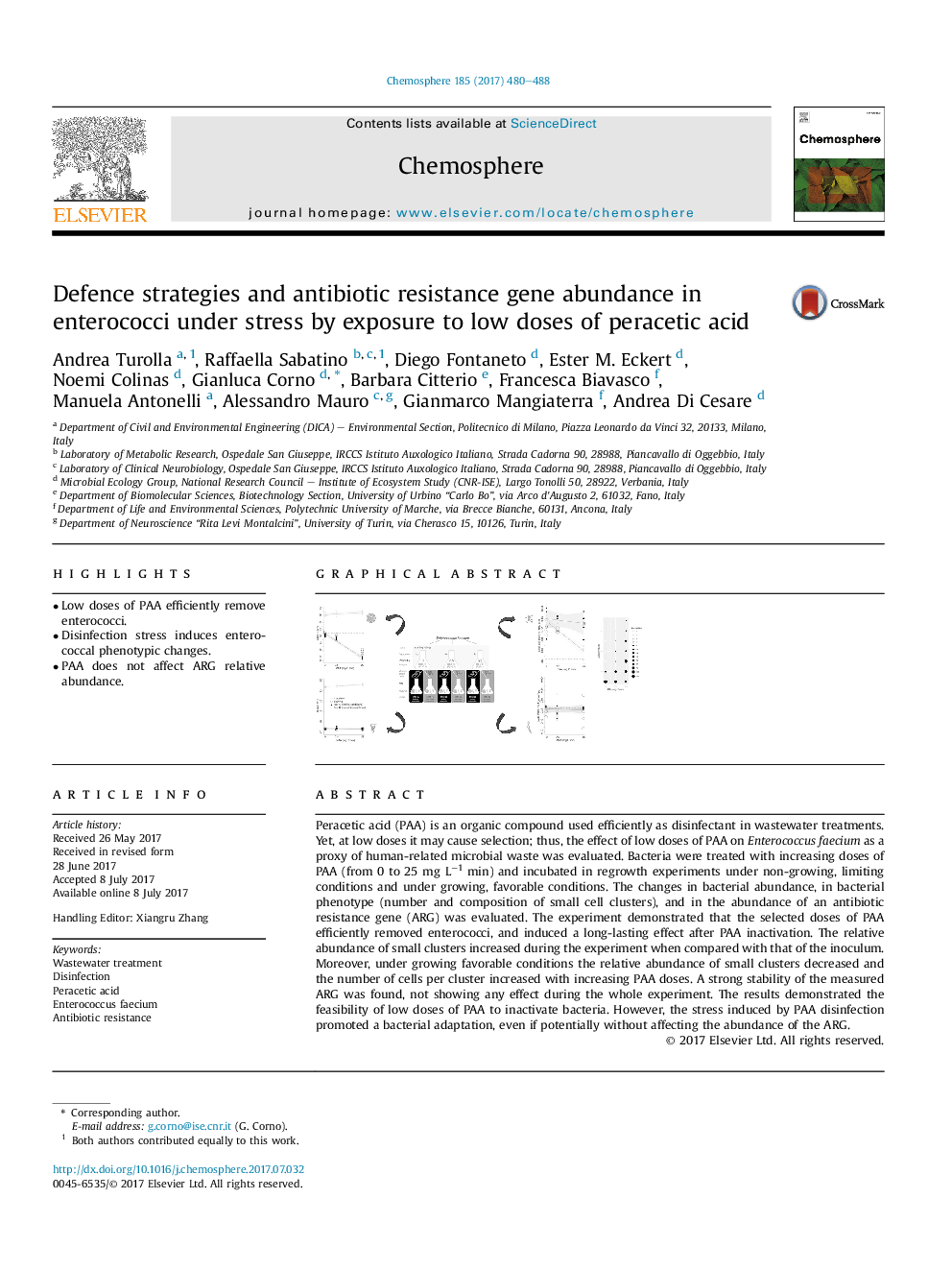| Article ID | Journal | Published Year | Pages | File Type |
|---|---|---|---|---|
| 5746748 | Chemosphere | 2017 | 9 Pages |
â¢Low doses of PAA efficiently remove enterococci.â¢Disinfection stress induces enterococcal phenotypic changes.â¢PAA does not affect ARG relative abundance.
Peracetic acid (PAA) is an organic compound used efficiently as disinfectant in wastewater treatments. Yet, at low doses it may cause selection; thus, the effect of low doses of PAA on Enterococcus faecium as a proxy of human-related microbial waste was evaluated. Bacteria were treated with increasing doses of PAA (from 0 to 25 mg Lâ1 min) and incubated in regrowth experiments under non-growing, limiting conditions and under growing, favorable conditions. The changes in bacterial abundance, in bacterial phenotype (number and composition of small cell clusters), and in the abundance of an antibiotic resistance gene (ARG) was evaluated. The experiment demonstrated that the selected doses of PAA efficiently removed enterococci, and induced a long-lasting effect after PAA inactivation. The relative abundance of small clusters increased during the experiment when compared with that of the inoculum. Moreover, under growing favorable conditions the relative abundance of small clusters decreased and the number of cells per cluster increased with increasing PAA doses. A strong stability of the measured ARG was found, not showing any effect during the whole experiment. The results demonstrated the feasibility of low doses of PAA to inactivate bacteria. However, the stress induced by PAA disinfection promoted a bacterial adaptation, even if potentially without affecting the abundance of the ARG.
Graphical abstractDownload high-res image (176KB)Download full-size image
